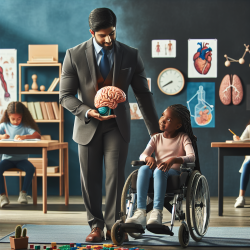Understanding Sensory Processing in Children with Neurofibromatosis Type 1 (NF1)
As a practitioner dedicated to improving outcomes for children, understanding the nuances of sensory processing in those with Neurofibromatosis Type 1 (NF1) is crucial. Recent research, such as the study titled Sensory Processing in Children and Adolescents with Neurofibromatosis Type 1, provides valuable insights into the sensory challenges faced by this population. This blog will explore the key findings of this research and how they can be applied to enhance therapeutic practices.
Key Findings from the Research
The study examined 152 children with NF1 and found that approximately 61% exhibited significant differences in sensory processing compared to typically developing peers. These differences were observed across various sensory modalities and were associated with elevated autistic behaviors, ADHD symptoms, and lower adaptive skills. The research highlights the importance of addressing multisensory processing difficulties in both home and school environments.
Implications for Practitioners
Understanding these sensory processing challenges allows practitioners to tailor interventions that are more effective for children with NF1. Here are some strategies to consider:
- Individualized Sensory Interventions: Develop personalized sensory integration plans that address specific sensory processing challenges identified in assessments.
- Multisensory Approach: Incorporate a variety of sensory activities that cater to the unique sensory profiles of children with NF1, ensuring a holistic approach to therapy.
- Collaboration with Educators: Work closely with teachers to implement classroom strategies that accommodate sensory processing needs, enhancing the learning environment for children with NF1.
Encouraging Further Research
While this study provides a foundation, further research is needed to explore the mechanisms underlying sensory processing differences in NF1. Practitioners are encouraged to contribute to this growing field by participating in research initiatives or conducting their own studies to deepen our understanding and improve therapeutic outcomes.
To read the original research paper, please follow this link: Sensory Processing in Children and Adolescents with Neurofibromatosis Type 1.










